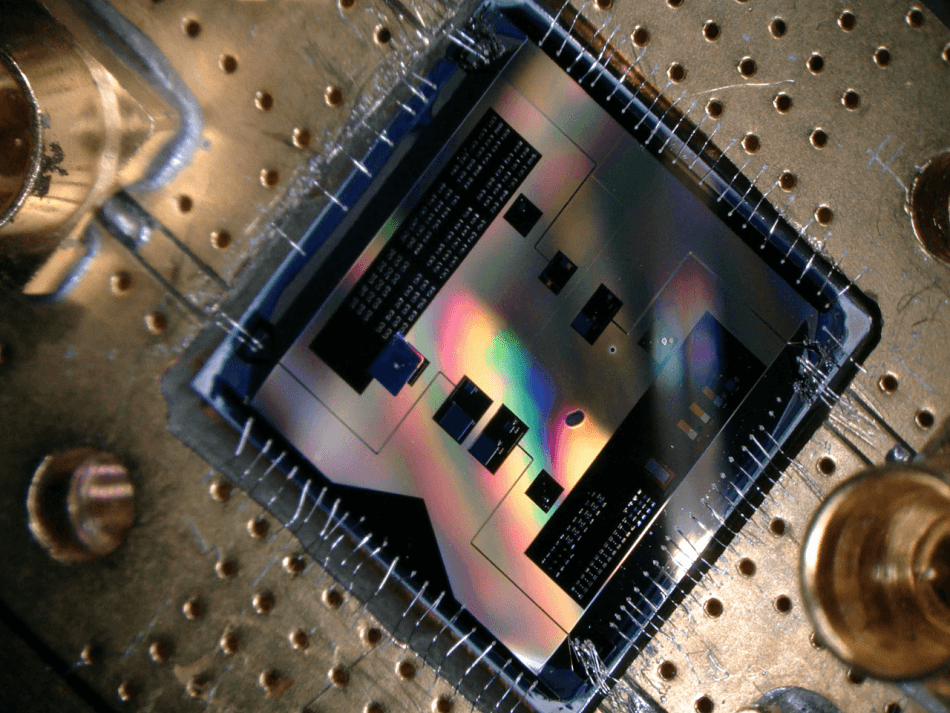Mar 11 2019
A quantum circuit developed by the scientists at Delft University of Technology permits them to listen to the feeblest radio signal allowed by quantum mechanics. This new quantum circuit paves the way to possible future applications in fields such as medicine (MRI) and radio astronomy. It also enables scientists to perform experiments that can offer insight into the interplay between quantum mechanics and gravity. The findings have been reported in Science.
 This quantum chip (1x1 cm) allows the researchers to listen to the weakest radio signal allowed by quantum mechanics. (Image credit: Delft University of Technology)
This quantum chip (1x1 cm) allows the researchers to listen to the weakest radio signal allowed by quantum mechanics. (Image credit: Delft University of Technology)
People have all been infuriated by weak radio signals some time in their lives: a favorite song in the car becoming just noise, or being very far away from a Wi-Fi router to check email. A typical solution used by people is to make the signal bigger, for example, by selecting a different radio station or by moving to the other side of a room. Suppose, however, one could simply listen more judiciously?
Feeble radio signals are not only a challenge for people wanting to locate their preferred radio station, but also for magnetic resonance imaging (MRI) scanners at hospitals, as well as for the telescopes used by researchers to scan space.
In a quantum “leap” in radio frequency detection, scientists in the team of Prof. Gary Steele in Delft showed the detection of photons or quanta of energy, the feeblest signals permissible by the theory of quantum mechanics.
Quantum chunks
One of the odd predictions of quantum mechanics is that energy comes in minute little chunks known as “quanta.” What does this indicate?
Say I am pushing a kid on a swing. In the classical theory of physics, if I want the kid to go a little bit faster I can give them a small push, giving them more speed and more energy. Quantum mechanics says something different: I can only increase the kid’s energy one ’quantum step’ at a time. Pushing by half of that amount is not possible.
Mario Gely, Study Lead Researcher, Delft University of Technology.
For a kid on a swing these “quantum steps” are so small that they are very minute to notice. Until lately, the same was real for radio waves. However, the study team in Delft built a circuit that can really detect these chunks of energy in radio frequency signals, paving the way to the possibility of sensing radio waves at the quantum level.
From quantum radio to quantum gravity?
Apart from applications in quantum sensing, the team in Delft is keen to take quantum mechanics to the next stage: mass. While the theory of quantum electromagnetism was put forth almost 100 years ago, physicists are still mystified these days on how to fit gravity into quantum mechanics.
Using our quantum radio, we want to try to listen to and control the quantum vibrations of heavy objects, and explore experimentally what happens when you mix quantum mechanics and gravity. Such experiments are hard, but if successful we would be able to test if we can make a quantum superposition of space-time itself, a new concept that would test our understanding of both quantum mechanics and general relativity.
Mario Gely, Study Lead Researcher, Delft University of Technology.